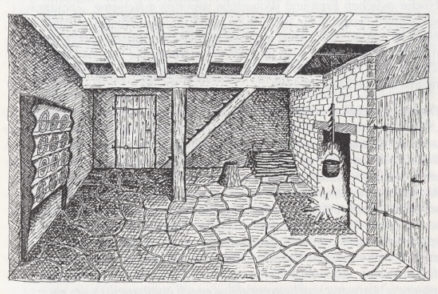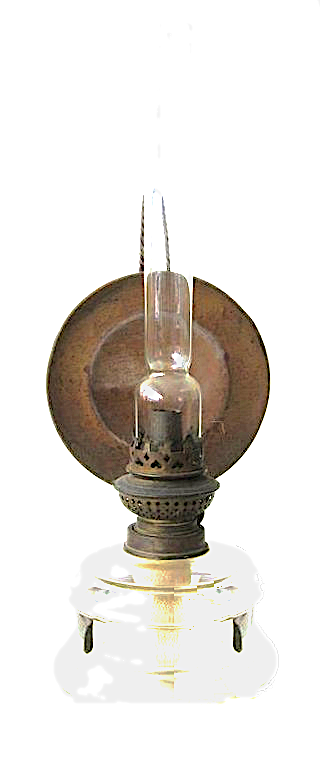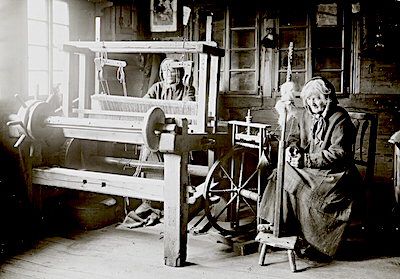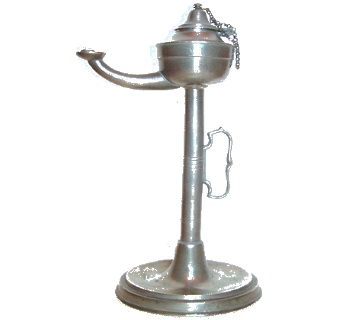And the wool for the stockings came from our own sheep. It
f
was always the youngest child who had to guard the sheep.
Kaspar Heinrich Simon
born 13. May 1818 in Hoff
died 11. February 1884 in Harscheid
died 11. February 1884 in Harscheid
Elisabeth Dax
born 28. October 1814 in Harscheid
died 17. February 1885 in Harscheid
died 17. February 1885 in Harscheid

Simon
Dax





Menü


A typical house and domestic life in Harscheid at the beginning of the 19th century
(text excerpts taken from Karl Schmitz's book "Chronik von Harscheid" / Chronicle of Harscheid) :
"Eren" with fireplace (right) and crockery board (left)
Above:
paraffin (kerosene) lamp

It was very homely when our big room was lighted from that little lamp and the women sat at the spinning wheels and somebody told unearthly tales about ghosts. The success was that all the children were afraid of darkness and at last only my father stayed courageous enough to go outside into the dark on his own. But what we did together, as well, was singing many of the old folk songs, what especially delighted my father. The women span linen, flax, hemp and the wool. My sisters wove the linen on their own looms.

I have already mentioned that my parents were very economical. The exercise book which we children needed for school was manufactured by my father himself. During winter time we caught birds with loops made from horse hair and in summer time we caught the young birds and bred them.
